Neyyappam{rice Pancakes Fried in Ghee} Recipe
Welcome to my kitchen! Today, I am thrilled to share with you my recipe for neyyappam, a traditional snack hailing from the southern Indian state of Kerala. This sweet and crispy rice-based fritter fried in ghee is a favorite of mine and I am excited to show you how to make it.
The name neyyappam literally means “ghee pancake” with “neyy” meaning ghee and “appam” meaning pancake. The name implies that this recipe is made with rice flour, jaggery, mashed bananas, and fried in ghee clarified butter. As a chef, I love cooking with ghee because it adds a rich and nutty flavor to any dish.
Neyyappam is a thiruvananthapuram special and is a staple in every Kerala household. It is a traditional snack that is often served during festivals and special occasions. The dish has a long history and its name is derived from the words “neyy” meaning ghee and “appam” meaning pancake.
In this article, I will guide you through the process of making neyyappam step-by-step, providing helpful tips and recommendations along the way. So, let’s get started and make some crispy and tasty neyyappam!
Why You’ll Love This Recipe
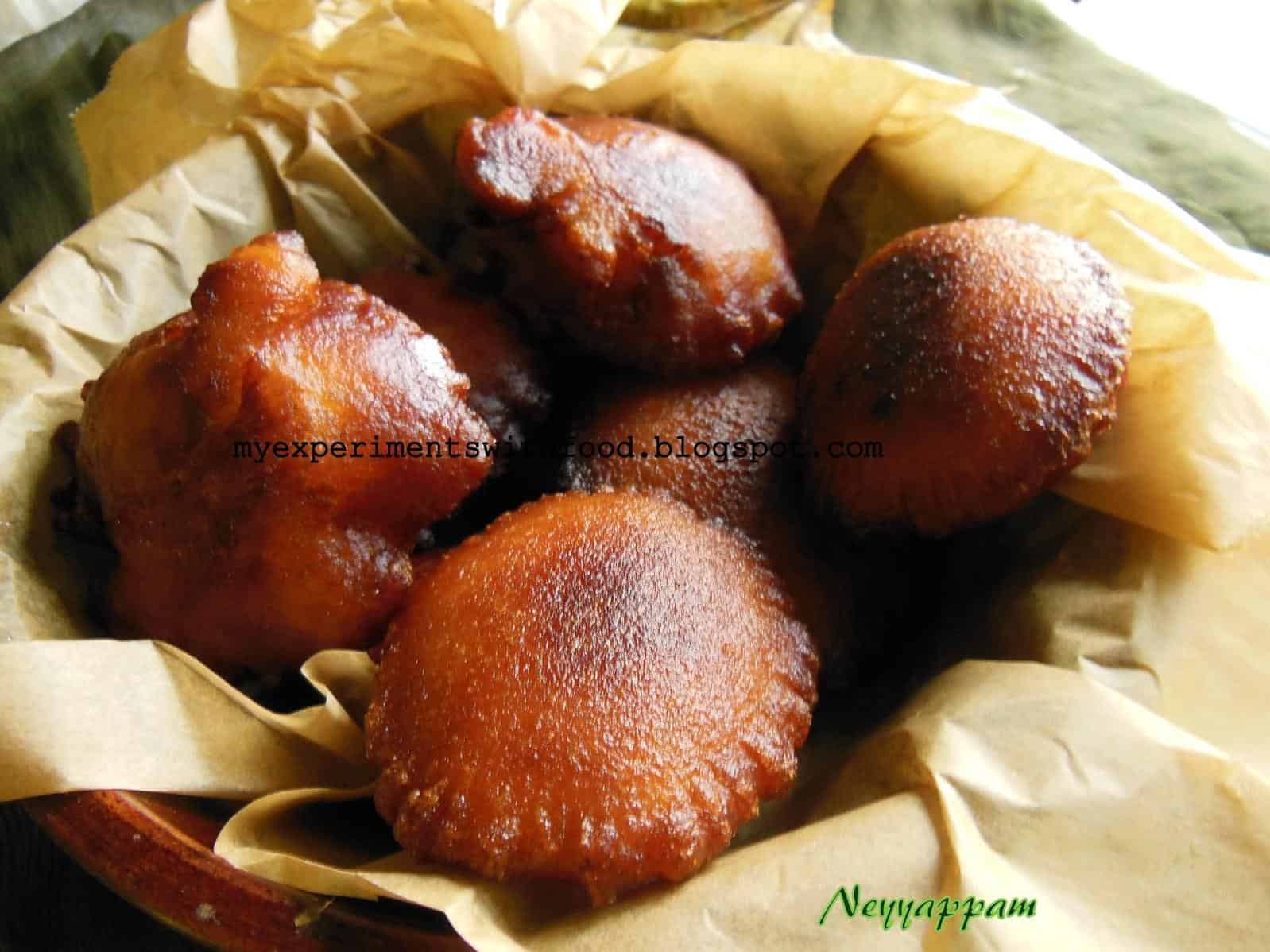
If you love sweet and crispy snacks, then Neyyappam sweet rice pancakes fried in ghee is the perfect recipe for you! This traditional snack from Thiruvananthapuram, Kerala, will transport you to the exotic flavors of South India.
What’s more, Neyyappam is made of rice flour, mashed bananas, jaggery, and cardamom powder, which makes it a healthier alternative to other deep-fried snacks. The name “Neyyappam” literally means “fried in ghee,” which adds a rich and buttery flavor to the fritters.
The recipe is incredibly easy to make, and you can customize it to your liking by adding fresh coconut or black sesame seeds. Plus, Neyyappam can be served as a dessert, a snack, or even as a breakfast item.
With its crispy exterior and soft and fluffy interior, this sweet rice-based fritter fried in ghee will leave you wanting more. Don’t miss out on the opportunity to try this traditional and tasty Neyyappam recipe!
Ingredient List

Let’s take a look at the ingredients you’ll need to make Neyyappam, the sweet rice pancakes fried in ghee. This traditional snack from Thiruvananthapuram, Kerala, is made with raw rice and jaggery, an unrefined sugar commonly used in Indian cuisine. The name “Neyyappam” literally translates to “fried in ghee,” and that’s exactly what we’ll be doing! Here’s what you’ll need to gather:
Ingredients:
- Raw Rice: 1 and 1/2 cups
- Jaggery: 1 cup, grated
- Plain Flour: 1/4 cup
- Rice Flour: 1 and 1/4 cups
- Mashed Bananas: 2 ripe bananas
- Fresh Coconut: 1/4 cup, grated
- Cardamom Powder: 1 teaspoon
- Black Sesame Seeds: 1 tablespoon
- Ghee/Clarified Butter: 1/2 cup (for frying)
- Water: 1 glass (approximately 200ml)
Make sure to have all of these ingredients on hand before you start making Neyyappam.
The Recipe How-To
Now that we have all the ingredients ready, let’s get started on making some delicious Neyyappam rice pancakes fried in ghee!
Step 1: Soak the Rice
The first step in making Neyyappam is to soak 1 cup of raw rice for at least 4 hours. This will help soften the rice and make it easier to grind.
Step 2: Grind the Rice
Once the rice has soaked for a few hours, drain the water and grind the rice into a fine powder in a mixer grinder. Add 1/2 cup of jaggery and grind again until it is well combined with the rice flour.
Step 3: Add the Remaining Ingredients
In a separate bowl, mix together 1/4 cup of plain flour, 1/4 cup of fresh coconut, 1/2 teaspoon of cardamom powder, and 1 tablespoon of black sesame seeds. Add this mixture to the rice flour and jaggery and mix well.
Step 4: Add Mashed Bananas
Next, mash 2 ripe bananas and add them to the mixture. Mix well until everything is combined. The mashed bananas will give the Neyyappam a nice, sweet flavor.
Step 5: Fry in Ghee
Heat a pan on medium heat and add 1 glass of ghee. Once the ghee is hot, spoon in the Neyyappam batter, making sure not to fill the pan too much. Fry the Neyyappam until it turns a golden brown color on both sides.
Step 6: Serve and Enjoy!
Once the Neyyappam is cooked, remove from the pan and place it on a paper towel to remove any excess ghee. Serve the Neyyappam hot and enjoy the sweet, crispy goodness of this traditional Kerala snack!
Now that you know how to make Neyyappam, try out this recipe for yourself and impress your friends and family with your delicious cooking skills!
Substitutions and Variations
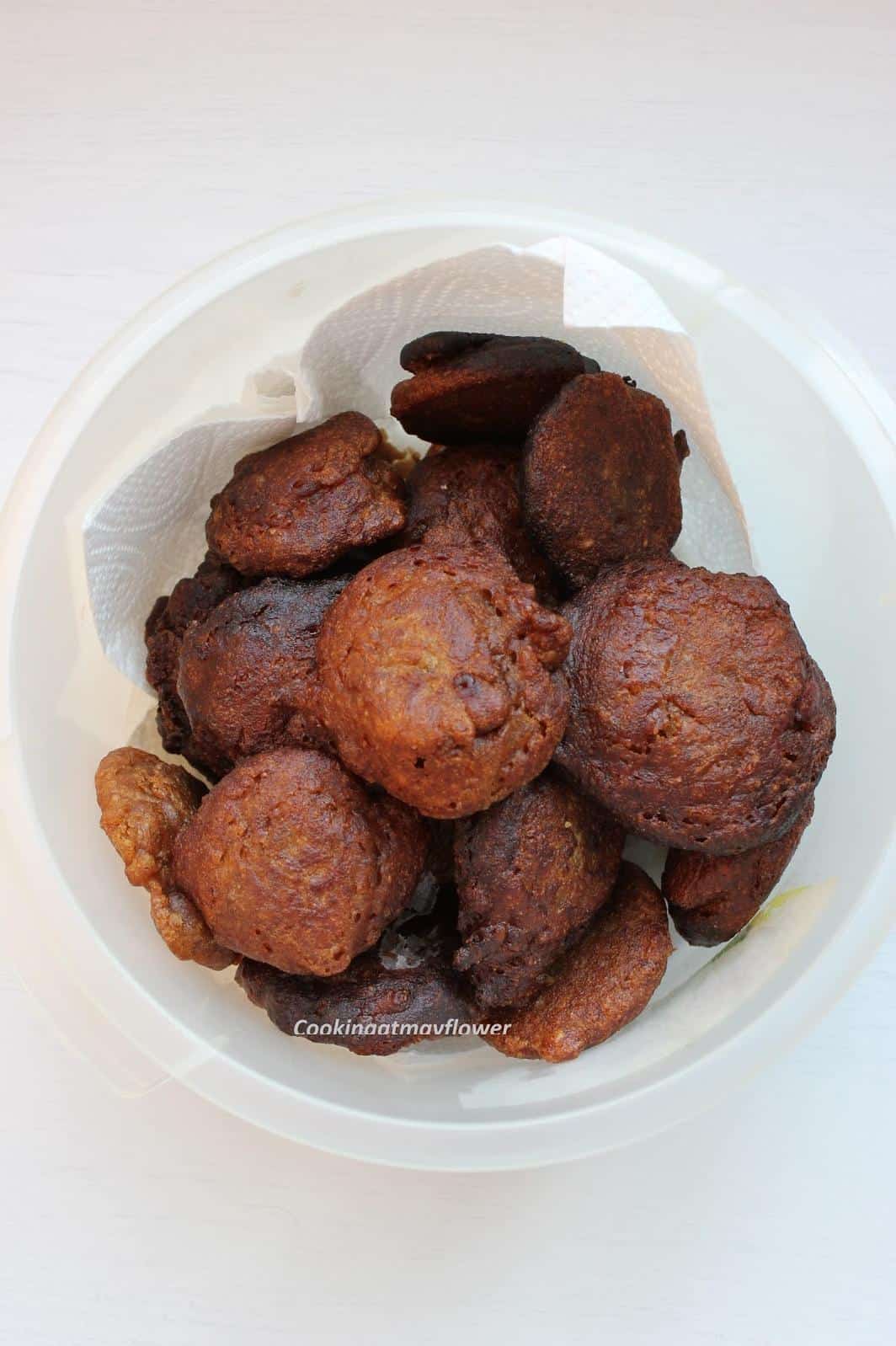
While neyyappam is traditionally made with rice flour, there are a few ingredient substitutions and variations you can try to make this recipe your own.
– Flour: If you don’t have rice flour on hand or prefer a different taste, you can use plain flour instead. Keep in mind that the texture and taste of the neyyappam will be slightly different.
– Jaggery: If you can’t find jaggery, you can substitute it with brown sugar or maple syrup. However, jaggery has a unique flavor that enhances the taste of the neyyappam, so it’s worth seeking out if possible.
– Bananas: While mashed bananas add a nice sweetness and moisture to the neyyappam, you can also try using other fruits like apples or pears. Keep in mind that the texture and taste will be different.
– Coconut: Fresh coconut adds a nice flavor and texture to the neyyappam, but if you can’t find it or don’t like it, you can skip it or try using dried coconut flakes.
– Spices: Cardamom powder and black sesame seeds are traditional spices used in neyyappam, but you can experiment with other spices like cinnamon, nutmeg or ginger to create your own unique flavor.
One variation you can try is to add chopped nuts like cashews or almonds to the batter for a crunchy texture. You can also try adding raisins or dried cranberries for a sweet burst of flavor.
Another variation is to make mini neyyappam by using a mini muffin pan. This creates bite-sized neyyappam that are perfect for snacking or serving as a party appetizer.
Whether you stick to the traditional recipe or try out some substitutions and variations, neyyappam is a delicious and versatile snack that is sure to delight your taste buds.
Serving and Pairing
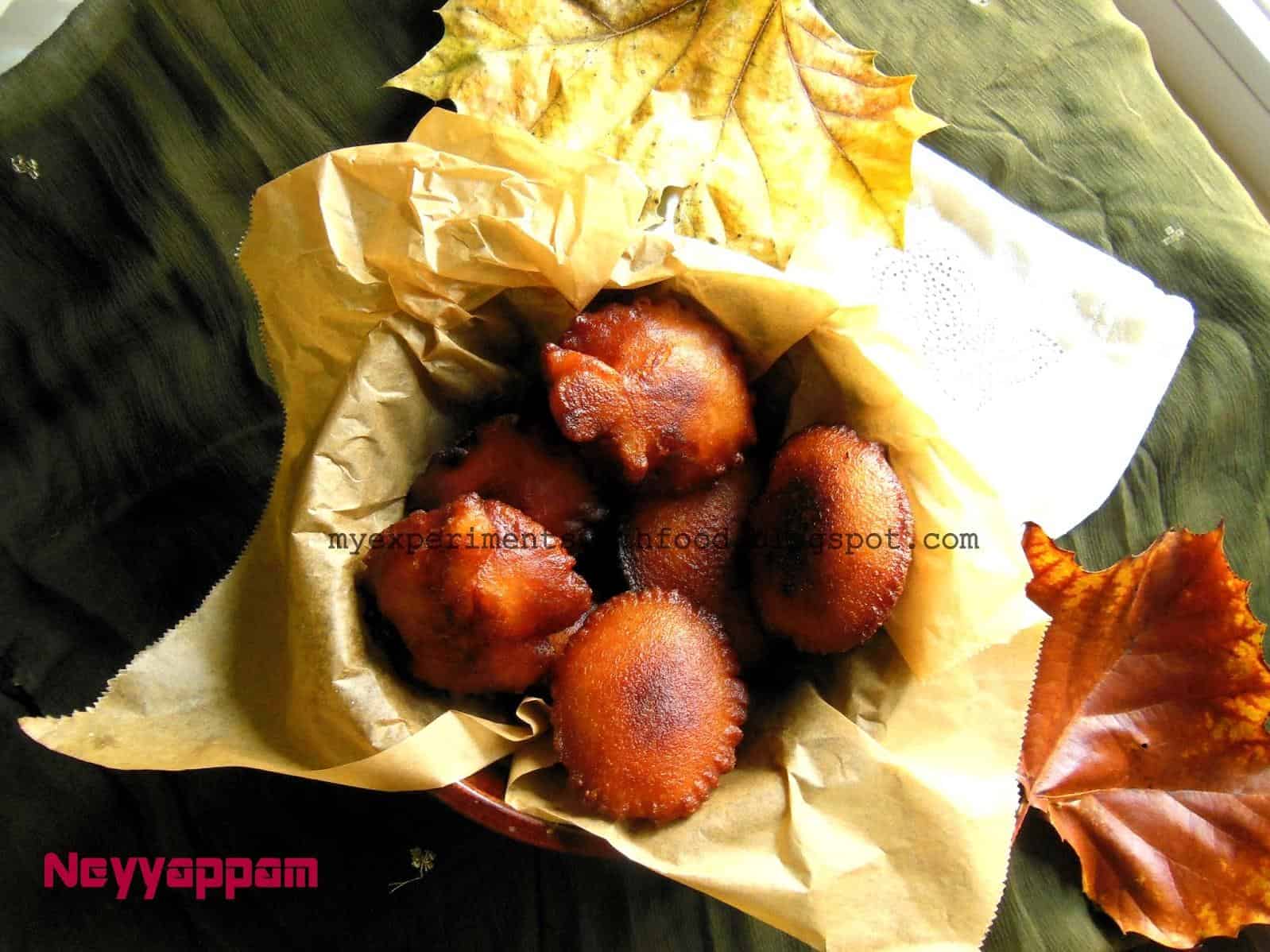
Serving neyyappam is as simple as it gets. This traditional snack is usually enjoyed as an afternoon or evening tea time treat. When it comes to pairing, neyyappam goes great with a hot cup of tea or coffee. The nutty aroma of black sesame seeds in the pancakes complements the bitterness of the coffee or tea, creating a perfect balance of flavors.
For a more indulgent experience, serve neyyappam with a scoop of vanilla ice cream. The combination of crispy neyyappam and creamy ice cream is heavenly. You can also try drizzling some honey on top for a sweeter twist.
If you want to get creative, you can use neyyappam as a base for a mini dessert platter. Top the pancakes with some mashed bananas, fresh coconut, and cardamom powder for an exotic twist. You can also serve neyyappam with a side of jaggery syrup for a more traditional approach.
Neyyappam also makes a great addition to a brunch or breakfast spread. Pair it with some other rice-based fritters like unniyappam and appam, and you’ve got a tasty rice snack platter.
No matter how you choose to serve it, neyyappam is a crowd-pleaser. With its crispy exterior and sweet rice filling, it’s sure to be a hit at any party or gathering.
Make-Ahead, Storing and Reheating

Neyyappam is traditionally made fresh and served hot, but it is possible to make it ahead of time and store it for later consumption. If you plan on making neyyappam ahead of time, you can store it in an airtight container for up to two days. This will help to preserve the freshness and flavor of the rice pancakes.
When reheating neyyappam, it’s best to use a microwave or a steamer. If you’re using a microwave, place the neyyappam on a microwave-safe plate and heat for 15-20 seconds, or until heated through. If you’re using a steamer, place the neyyappam in the steamer and steam for 2-3 minutes, or until heated through.
If you’re planning on serving neyyappam at a party or get-together, you can make it ahead of time and store it in an airtight container in the refrigerator. When it’s time to serve, you can reheat the neyyappam using the methods mentioned above. This will save you time and ensure that your guests can enjoy freshly heated neyyappam.
It’s important to note that neyyappam is best served fresh and hot, so it’s recommended to make it fresh if possible. However, if you need to make it ahead of time, storing it properly and reheating it correctly will ensure that it remains tasty and delicious.
Tips for Perfect Results
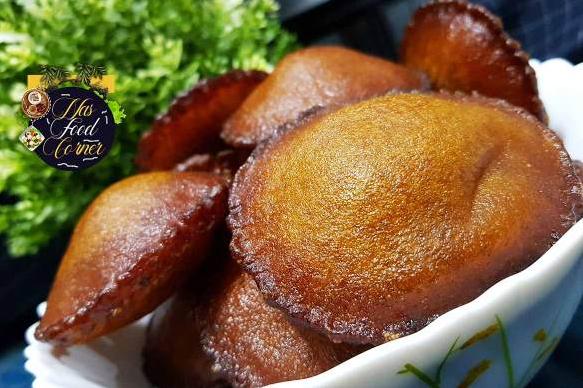
Now that you have the basic recipe for neyyappam, it’s time to focus on some tips to achieve perfect results and make the most of the ingredients.
1. Measure the Ingredients Accurately: Make sure to measure the ingredients accurately, especially the rice flour and jaggery. Inaccurate measurements can lead to a dense or dry neyyappam.
2. Use Fresh Ingredients: The taste of neyyappam depends greatly on the freshness of the ingredients, especially the coconut and bananas. Use fresh, ripe bananas and grate the coconut just before adding it to the batter.
3. Rest the Batter: Let the batter rest for at least 30 minutes before frying. This allows the rice flour to absorb the moisture and results in a lighter neyyappam.
4. Fry in Ghee: Frying the neyyappam in ghee adds a unique flavor and aroma to the dish. Use homemade ghee or clarified butter for best results.
5. Maintain the Right Temperature: Maintain the oil temperature at medium heat while frying. If the oil is too hot, the neyyappam will brown too quickly on the outside but remain raw on the inside.
6. Cook in Small Batches: Fry the neyyappams in small batches to ensure that each piece cooks evenly and gets crispy.
7. Drain the Excess Oil: Once the neyyappams are fried, place them on a paper towel to absorb the excess oil. This ensures that the neyyappams don’t become greasy and heavy.
By following these tips, you can make delicious and crispy neyyappams that melt in your mouth. Enjoy this traditional snack with a hot cup of tea or coffee!
Bottom Line
In conclusion, neyyappam is a traditional snack that has become a favorite across Kerala and beyond. With its crispy exterior and sweet, satisfying taste, it’s no wonder why so many people love this dish. Whether you’re looking for a tasty snack or a delicious dessert, neyyappam is sure to satisfy your cravings. So why not try making neyyappam at home today? With this recipe and these tips, you can make your own perfect batch of neyyappam and enjoy this beloved dish whenever you want. Trust me, one bite of these sweet rice fritters fried in ghee will transport you to the streets of Kerala and leave you craving more.
Neyyappam{rice Pancakes Fried in Ghee} Recipe
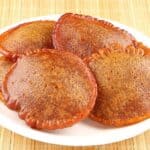
This is a South Indian speciality. I found this recipe in the Thursday magazine {June 3-9′ 04}. It was submitted by Sulochana. I’m yet to try it but since I’ve eaten these, I know they are yummy. Enjoy! Note: The cooking time is a guesstimate.
- 1 3/4 cups rice flour
- 1/4 cup plain flour
- 2 bananas, mashed
- 4 tablespoons jaggery
- 1 tablespoon finely chopped fresh coconut
- 1 tablespoon black sesame seed
- 1/4 teaspoon cardamom powder
- ghee, as required, for frying
- Melt jaggery in 1/2 cup of water in a pan on low heat.
- Strain it and allow it to cool.
- In a separate pan, fry the chopped coconut in ghee until it is golden brown. Keep aside.
- In a large bowl, mix together the rice flour, plain flour and mashed bananas.
- Add all the remaining ingredients, except the ghee/oil to fry and mix well.
- Stir in water to make it into a thick consistency mixture.
- Leave it aside for 4-5 hours.
- Heat oil in an ‘Appakara'{a special moulded frying dish}.
- Pour the thick mixture in small quantities into the pan moulds.
- Remove the fried pancakes from the vessel when they are dark brown.
- Your snack is ready to serve.
- Enjoy!
- Note:This can be stored in an airtight container for upto 1 week.
[custom-related-posts title=”Recommended Recipes Just For You” none_text=”None found” order_by=”date” order=”ASC”]
